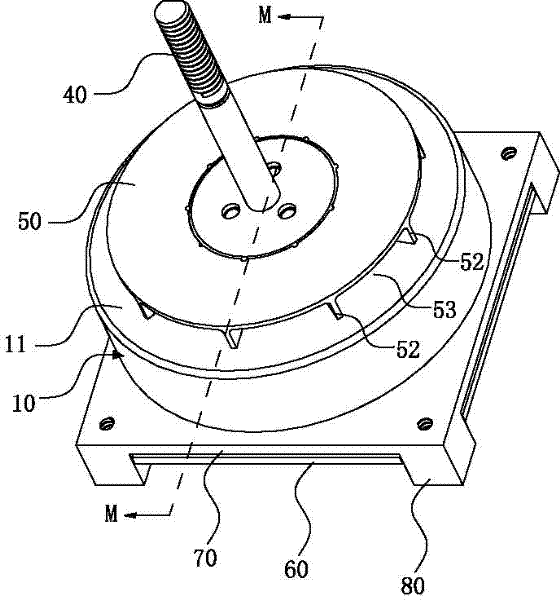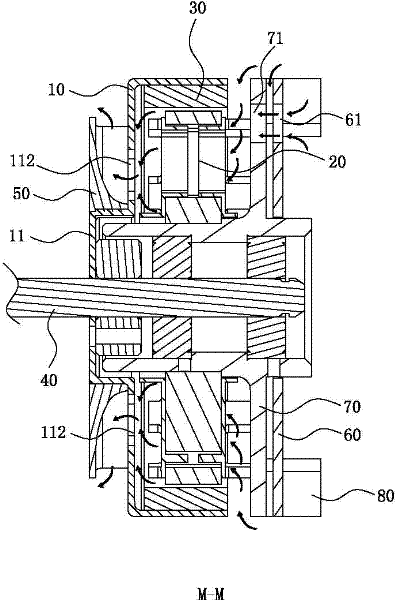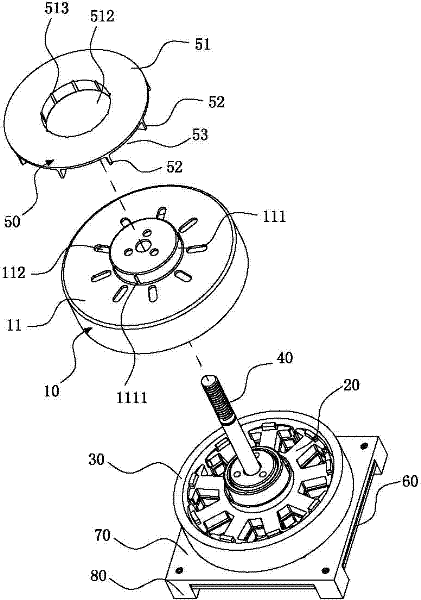Self-radiating motor
A self-heating, motor shaft technology, applied in the direction of electrical components, electromechanical devices, electric components, etc., can solve the problems of poor heat dissipation, components in a relatively harsh working environment, and cannot meet the self-heating of the same motor, so as to meet the heat dissipation requirements. Better self-dissipation effect and lower temperature effect
- Summary
- Abstract
- Description
- Claims
- Application Information
AI Technical Summary
Problems solved by technology
Method used
Image
Examples
Embodiment Construction
[0043] See Figure 1 to Figure 5 As shown, it shows the specific structure of the preferred embodiment of the present invention, including a housing 10 , a stator 20 , a rotor 30 , a motor shaft 40 , fan blades 50 and a circuit board 60 . The internal structure and working principle of the motor are not the innovation of this case, so I won’t repeat them here.
[0044] Wherein, the housing 10 is sleeved on the aforementioned motor shaft 40 and rotates with the motor shaft 40; the housing 10 has an end cover 11, and the end cover 11 is formed with a sleeve portion 111 outward along the direction of the motor shaft 40, and A block 1111 protrudes from the outer peripheral side of the sleeve portion 111 , and, corresponding to the position of each guide groove 53 of the fan blade 50 described below, a third cooling hole 112 is opened on the end cover 11 to facilitate air flow out of the casing 10 .
[0045] The fan blade 50 is a fan blade 50 capable of drawing air from the inside...
PUM
 Login to View More
Login to View More Abstract
Description
Claims
Application Information
 Login to View More
Login to View More - R&D
- Intellectual Property
- Life Sciences
- Materials
- Tech Scout
- Unparalleled Data Quality
- Higher Quality Content
- 60% Fewer Hallucinations
Browse by: Latest US Patents, China's latest patents, Technical Efficacy Thesaurus, Application Domain, Technology Topic, Popular Technical Reports.
© 2025 PatSnap. All rights reserved.Legal|Privacy policy|Modern Slavery Act Transparency Statement|Sitemap|About US| Contact US: help@patsnap.com



